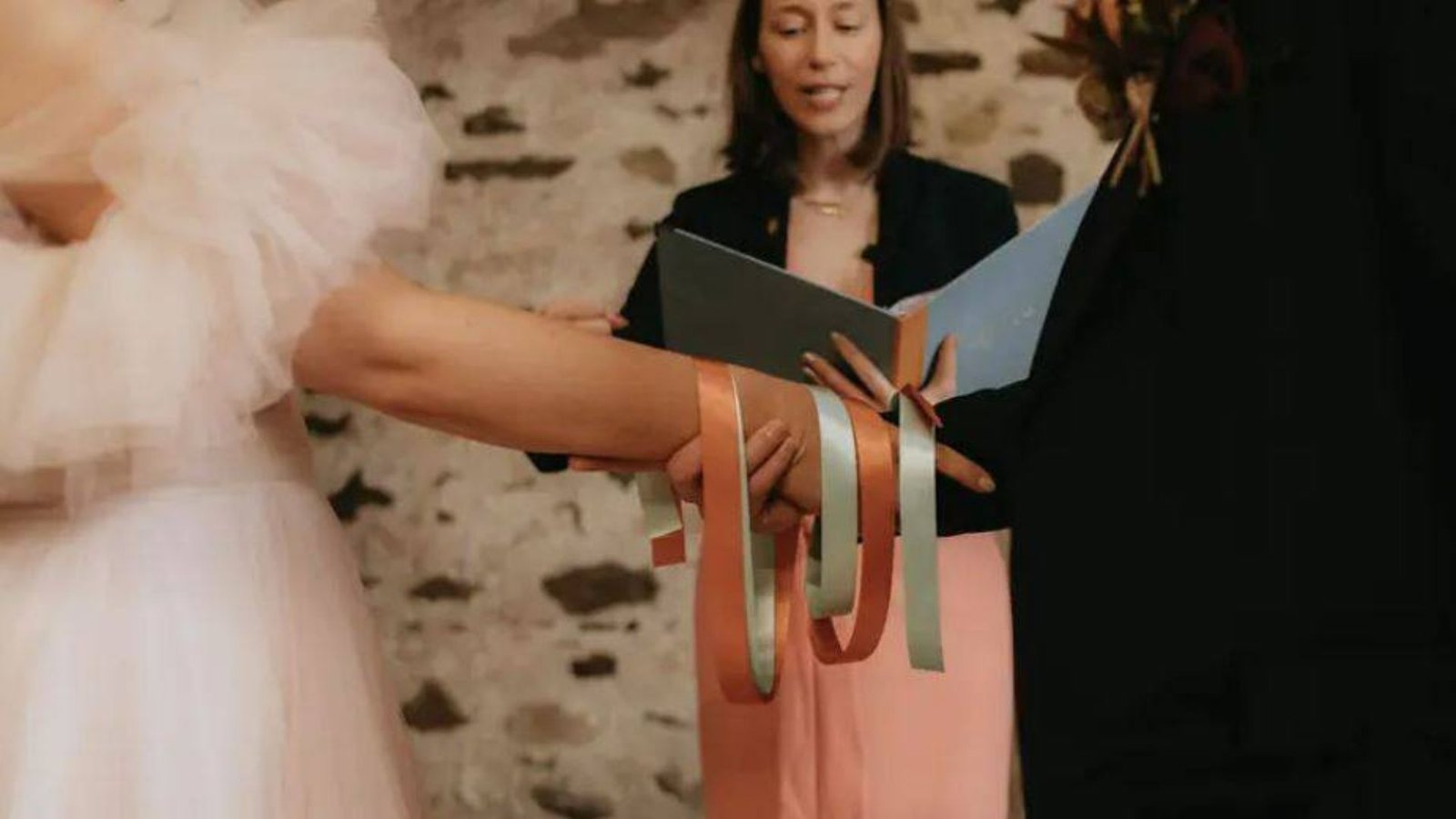Ireland, with its rich history and vibrant culture, offers a treasure trove of traditional wedding customs that add depth and meaning to the celebration of marriage. These ancient rituals, steeped in symbolism and folklore, can bring a unique touch to your wedding day, connecting you with Irish heritage and creating memories that last a lifetime. Here’s how you can incorporate some of these timeless customs into your big day.

The Claddagh Ring
The Claddagh ring is one of the most recognizable symbols of Irish culture, representing love, loyalty, and friendship—the three pillars of a strong marriage. Traditionally, the ring features two hands holding a heart, topped with a crown. The way the ring is worn can signify the wearer’s relationship status. Incorporating the Claddagh ring into your wedding, whether as an engagement or wedding ring, is a meaningful way to symbolize the bond between you and your partner.
Handfasting
Handfasting is an ancient Celtic ritual that involves the couple’s hands being tied together with a cord or ribbon, symbolizing their union. This custom is the origin of the phrase “tying the knot.” During the ceremony, the couple’s hands are bound as they exchange vows, representing their commitment to each other. This ritual can be a beautiful addition to your wedding ceremony, allowing you to honor an ancient tradition while making a personal pledge of love and loyalty.
The Irish Wedding Bell
The ringing of bells is a tradition in Irish weddings, meant to ward off evil spirits and bring good luck to the newlyweds. Some couples choose to include an Irish wedding bell in their ceremony, either ringing it themselves or having guests ring small bells as the couple walks down the aisle. The bell can also be kept in the couple’s home as a reminder of their vows and to restore harmony during disagreements.
The Lucky Horseshoe
The horseshoe has long been a symbol of good luck in Irish culture. Traditionally, brides would carry a horseshoe during the wedding ceremony, often sewn into their bouquet or dress, to ensure happiness and prosperity. To incorporate this custom into your wedding, consider using a horseshoe charm as part of your décor, jewelry, or even as a unique keepsake for guests. Just be sure to keep the horseshoe facing upwards to catch and hold the good luck.
The Irish Lace
Irish lace, known for its intricate patterns and delicate beauty, has been a cherished element of Irish weddings for generations. Brides often wore Irish lace on their wedding day, either in their dresses, veils, or handkerchiefs. Incorporating Irish lace into your wedding attire is a lovely way to pay homage to your heritage and add a touch of elegance to your outfit. Whether you choose a full lace gown or a simple lace trim, this detail will make your wedding ensemble even more special.
Celtic Knots
Celtic knots, with their endless loops and intricate designs, symbolize eternity and the interconnectedness of life. These ancient symbols are often used in Irish wedding bands, invitations, and decorations. Incorporating Celtic knots into your wedding, whether in your rings, stationery, or décor, adds a layer of meaning and connects your celebration to the rich tapestry of Irish culture.
The Irish Blessing
An Irish wedding wouldn’t be complete without an Irish blessing. These traditional sayings, often passed down through generations, are filled with warmth, wisdom, and well-wishes for the couple’s future. You can include an Irish blessing in your ceremony, have it read by a family member, or include it in your wedding program or invitations. Some popular blessings include:
“May the road rise up to meet you. May the wind be always at your back. May the sun shine warm upon your face, and the rains fall soft upon your fields.”
The Celtic Harp
The Celtic harp is Ireland’s national symbol and has been used in Irish weddings for centuries. Its hauntingly beautiful music adds a magical touch to any ceremony or reception. Consider hiring a harpist to play traditional Irish melodies as you walk down the aisle or during your reception. The enchanting sound of the harp will create an unforgettable atmosphere, transporting you and your guests to the heart of Ireland.
The ‘Lucky’ Marriage Dates
In Irish tradition, certain days are considered more fortunate for weddings than others. For instance, marrying during the “light half” of the year, between May and October, is believed to bring good luck. Additionally, it’s considered unlucky to marry on a Saturday. While modern couples may not strictly adhere to these beliefs, considering these traditional guidelines can add an extra layer of significance to your wedding date.
Incorporating Irish Dance
Irish dance, with its lively rhythms and energetic movements, is a vibrant part of Irish culture. Including Irish dance in your wedding reception, whether through a professional performance or a group dance with your guests, is a fun way to celebrate your heritage. It’s sure to be a highlight of your wedding, bringing joy and excitement to the celebration.
Conclusion
Incorporating traditional Irish wedding customs into your big day is a wonderful way to honor your heritage and add meaningful, symbolic elements to your celebration. Whether you choose to include a Claddagh ring, perform a handfasting ceremony, or dance to the tunes of a Celtic harp, these customs will help create a wedding that is uniquely yours. Embrace these ancient rituals, and let them bring you and your partner closer together as you embark on this new chapter of your lives.

